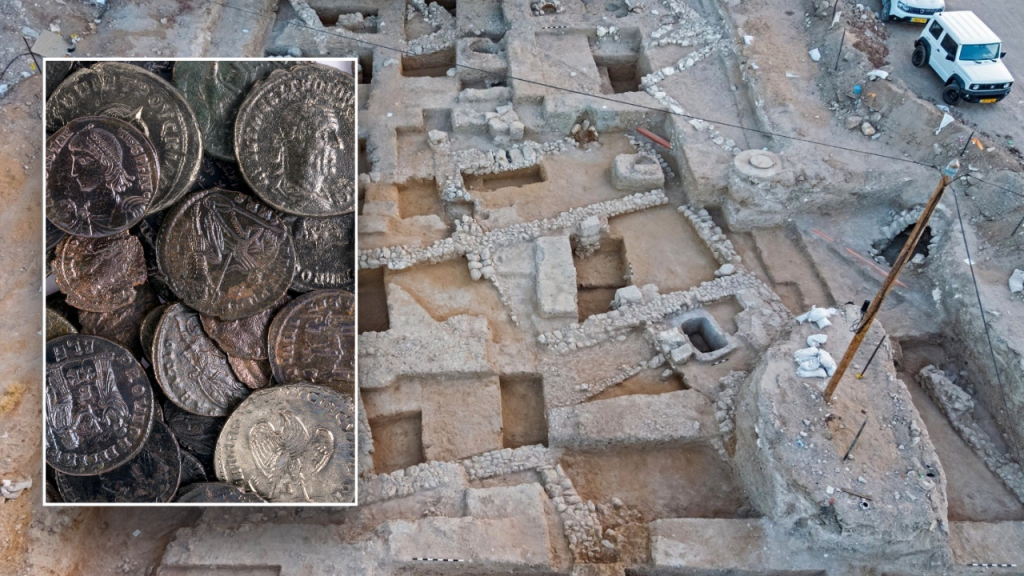Archaeologists in Israel have made a significant discovery in Lod, central Israel, revealing the remains of a Jewish public building from the Roman era of Israel. The building, which dates back roughly 1,650 years, contained various artifacts such as stone and marble pieces, inscriptions in Greek, Hebrew, and Latin, as well as a unique inscription with the name of a Jewish man from a priestly family. The absence of pig bones in the site further confirms its association with the Jewish community.
Additionally, excavators found a hoard of 94 coins, dating back to the time of the Gallus Revolt (351-354 CE), a period marked by the destruction of major Jewish communities by the forces of Roman Caesar Flavius Constantius Gallus. Historians believe that the coins were purposely hidden during the revolt, with the intention of being retrieved once the situation calmed down. The discovery sheds light on the violent and cruel nature of the revolt, contradicting previous theories that it was merely a local uprising.
The building in Lod is believed to have served as living quarters for the city’s Jewish elders, based on Talmudic writings that describe Lod as a significant Jewish center following the destruction of the Second Temple in Jerusalem. The destruction of the building down to its foundation indicates the extent of the revolt’s impact in Lod, highlighting the power and violence of the event. The discovery provides valuable insights into the history and heritage of Lod as one of the oldest cities in the world.
The mayor of Lod, Yair Revivo, expressed the emotional significance of the discovery, linking it to the city’s Tannaitic period heritage and Jewish history. The findings in the area emphasize Lod’s role as a center for Torah-true Jewish life during the Mishna and Talmud periods. Professor Joshua Schwartz of the Israel Antiquities Authority Council noted that the discovery raises questions about the building’s function, speculating that it may have served as a synagogue, study hall, meeting hall, or a combination of these roles.
Schwartz emphasized that the size of the building, the coin hoard, and the archaeological finds align with descriptions of Lod/Diospolis as a center of Jewish life in both Jewish and non-Jewish sources. The role of Lod as a leading community with elders continued from the time after the destruction of the Second Temple to the Gallus Revolt. The discovery adds to the historical knowledge of Jewish life in the ancient Roman era of Israel, highlighting the resilience and significance of Jewish communities in the region.
Overall, the excavation in Lod provides valuable insights into Jewish life during the Roman era in Israel through the discovery of a destroyed Jewish public building and a hoard of ancient coins. The findings shed light on the violent nature of the Gallus Revolt and emphasize Lod’s historical significance as a center of Torah-true Jewish life. The discovery adds to the understanding of Jewish history in the region and underscores the continued presence and resilience of Jewish communities in ancient times.


